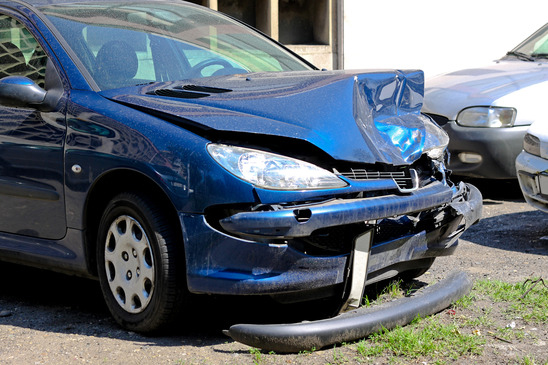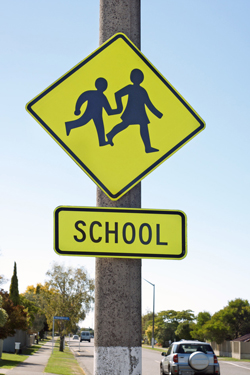An Arroyo Grande nursing home, Casa Rosa Elder Care, is being sued after a 91 year old patient, Claire Trubo, fell and called for help for nearly three hours as she lay battered, bruised and bleeding, before the nursing home attendant woke from a nap and came to her assistance. The suit claims the nursing home is understaffed due to their placing money above patient care in their priority list.
 The trouble started in October of 2013 when Ms. Trubo was first admitted to the elder care facility. The staff was made aware at that time of the patients need to be assisted to and from the bathroom. In an instance prior to the fall, the nursing home neglect lawsuit cites she was escorted to the bathroom, only to be left for over 20 minutes before being escorted back. When she brought the matter to the attention of authority, she was told to use the bathroom, i.e. defecate and urinate, in her bed and wait to be cleaned up. Administration was involved at that point and Ms. Rosa’s family was assured the behavior was unacceptable and would not happen again.
The trouble started in October of 2013 when Ms. Trubo was first admitted to the elder care facility. The staff was made aware at that time of the patients need to be assisted to and from the bathroom. In an instance prior to the fall, the nursing home neglect lawsuit cites she was escorted to the bathroom, only to be left for over 20 minutes before being escorted back. When she brought the matter to the attention of authority, she was told to use the bathroom, i.e. defecate and urinate, in her bed and wait to be cleaned up. Administration was involved at that point and Ms. Rosa’s family was assured the behavior was unacceptable and would not happen again.
On a separate occasion, two days later, Ms. Trubo rang her buzzer but received no assistance. She waited an additional 20 minutes before walking to the bathroom alone, making it without incident. She used the bathroom and then pulled the assistance chain next to the toilet. Again, she waited 20 minutes without assistance or recognition. She attempted to walk back to her bed without assistance when she fell. With no handrail to grasp and too far from the assistance chain, she yelled for assistance. It was three hours before assistance arrived.
 The doctor, endocrinologist Jeffrey J. Abrams, is now suspended from that clinic, but at the time of this writing, he still holds his state medical license and hasn’t been arrested.
The doctor, endocrinologist Jeffrey J. Abrams, is now suspended from that clinic, but at the time of this writing, he still holds his state medical license and hasn’t been arrested. Personal Injury Lawyer Blog
Personal Injury Lawyer Blog









 DUI charges can often be reduced to a wet reckless charge. A wet reckless charge is a reckless driving offense with a calculable amount of alcohol in the blood of the driver. It must be a very small amount and the reckless behavior cannot be of any serious type. If you’re DUI has been reduced to a wet reckless charge you must enroll in a DUI school, wet reckless program for a total of 12 hours.
DUI charges can often be reduced to a wet reckless charge. A wet reckless charge is a reckless driving offense with a calculable amount of alcohol in the blood of the driver. It must be a very small amount and the reckless behavior cannot be of any serious type. If you’re DUI has been reduced to a wet reckless charge you must enroll in a DUI school, wet reckless program for a total of 12 hours. Brain shunts are commonly used to treat hydrocephalus. When the brain shunt fails or develops complications, it can be terrifying for the patient and his or her family. Our medical malpractice attorneys have extensive experience helping clients determine if the brain shunt complications were due to a preventable and unavoidable malfunction or failure of the brain shunt.
Brain shunts are commonly used to treat hydrocephalus. When the brain shunt fails or develops complications, it can be terrifying for the patient and his or her family. Our medical malpractice attorneys have extensive experience helping clients determine if the brain shunt complications were due to a preventable and unavoidable malfunction or failure of the brain shunt. That is almost exactly what happened on January 17, 2015. A 73-year-old woman was walking in her town of Gatesville, Texas. When she tried to cross the street, a silver car driven by a 17-year-old boy hit her. When the police, EMS and fire department arrived, they pronounced her dead at the scene.
That is almost exactly what happened on January 17, 2015. A 73-year-old woman was walking in her town of Gatesville, Texas. When she tried to cross the street, a silver car driven by a 17-year-old boy hit her. When the police, EMS and fire department arrived, they pronounced her dead at the scene.


 The trouble started in October of 2013 when Ms. Trubo was first admitted to the elder care facility. The staff was made aware at that time of the patients need to be assisted to and from the bathroom. In an instance prior to the fall, the nursing home neglect lawsuit cites she was escorted to the bathroom, only to be left for over 20 minutes before being escorted back. When she brought the matter to the attention of authority, she was told to use the bathroom, i.e. defecate and urinate, in her bed and wait to be cleaned up. Administration was involved at that point and Ms. Rosa’s family was assured the behavior was unacceptable and would not happen again.
The trouble started in October of 2013 when Ms. Trubo was first admitted to the elder care facility. The staff was made aware at that time of the patients need to be assisted to and from the bathroom. In an instance prior to the fall, the nursing home neglect lawsuit cites she was escorted to the bathroom, only to be left for over 20 minutes before being escorted back. When she brought the matter to the attention of authority, she was told to use the bathroom, i.e. defecate and urinate, in her bed and wait to be cleaned up. Administration was involved at that point and Ms. Rosa’s family was assured the behavior was unacceptable and would not happen again.